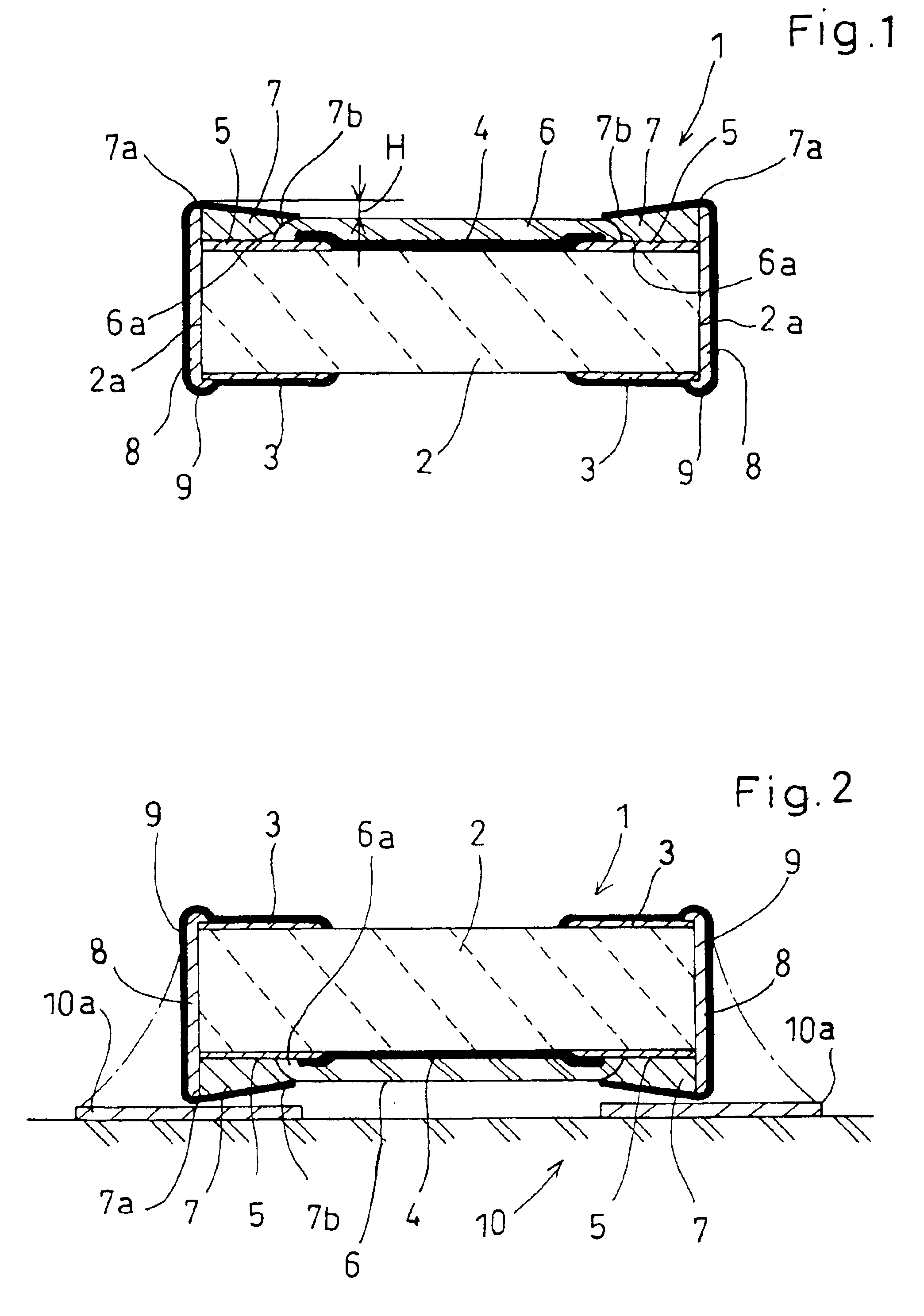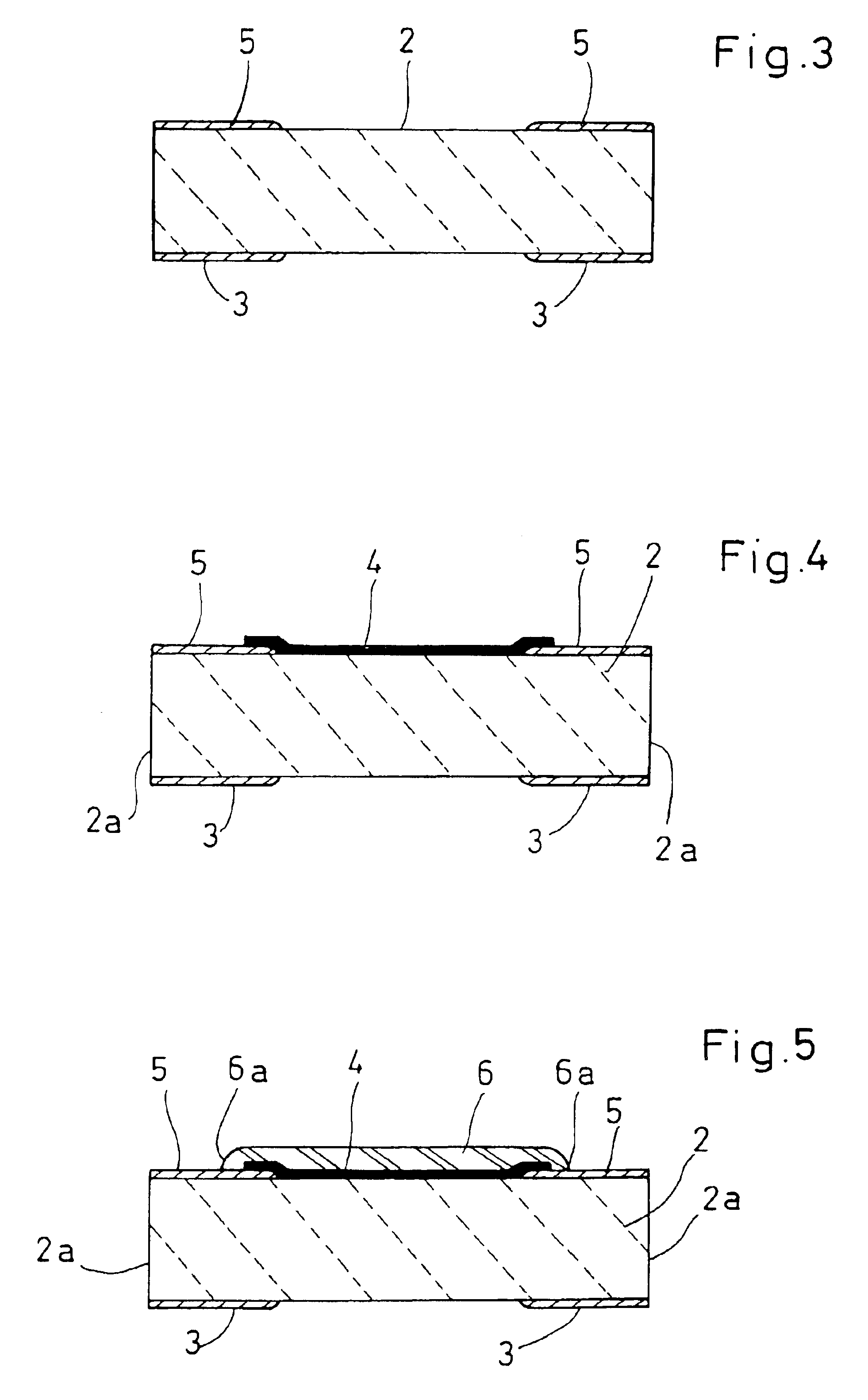Chip resistor
a chip resistor and resistor technology, applied in the field of chip resistors, can solve the problems of inability to enhance the rated value of the chip resistor, the cover coat is brought into contact or comes too close with the printed circuit board, and the chip resistor is often disadvantageously inclined, so as to achieve the effect of reducing manufacturing costs and reliably preventing the corrosion of the upper electrodes
- Summary
- Abstract
- Description
- Claims
- Application Information
AI Technical Summary
Benefits of technology
Problems solved by technology
Method used
Image
Examples
Embodiment Construction
A chip resistor 1 according to an embodiment of the present invention includes an insulating substrate 2 in the form of a chip made of a heat-resistant material such as ceramic material. The insulating substrate 2 has a lower surface provided with a pair of lower electrodes 3 made of a conductive paste mainly composed of silver, which has a relatively low electric resistance. (Hereinafter, the paste is referred to as “silver-based conductive paste”.) The insulating substrate 2 has an upper surface formed with a resistor film 4, and a pair of upper electrodes 5 flanking and connected to the resistor film 4. The upper electrodes 5 are also made of a silver-based conductive paste. The chip resistor 1 further includes a cover coat 6 made of e.g. glass for covering the resistor film 4. The cover coat 6 overlaps part of each of the upper electrodes 5.
Each of the upper electrodes 5 has an upper surface formed with an auxiliary upper electrode 7 made of a silver-based conductive paste. The ...
PUM
 Login to View More
Login to View More Abstract
Description
Claims
Application Information
 Login to View More
Login to View More - R&D
- Intellectual Property
- Life Sciences
- Materials
- Tech Scout
- Unparalleled Data Quality
- Higher Quality Content
- 60% Fewer Hallucinations
Browse by: Latest US Patents, China's latest patents, Technical Efficacy Thesaurus, Application Domain, Technology Topic, Popular Technical Reports.
© 2025 PatSnap. All rights reserved.Legal|Privacy policy|Modern Slavery Act Transparency Statement|Sitemap|About US| Contact US: help@patsnap.com



